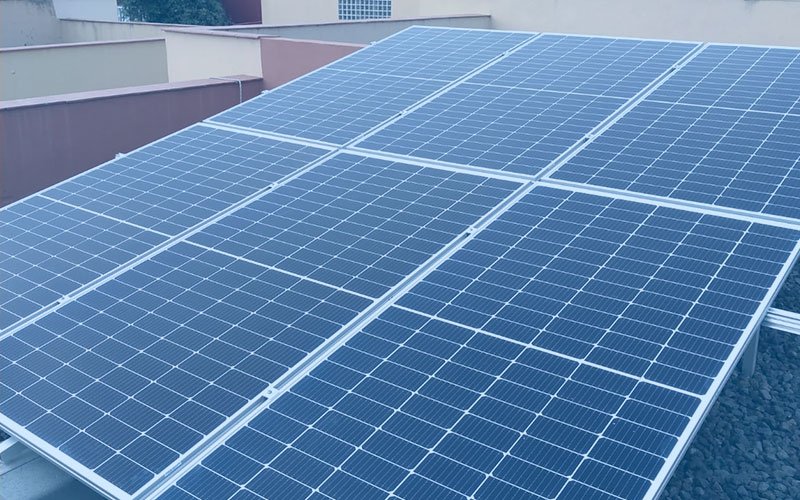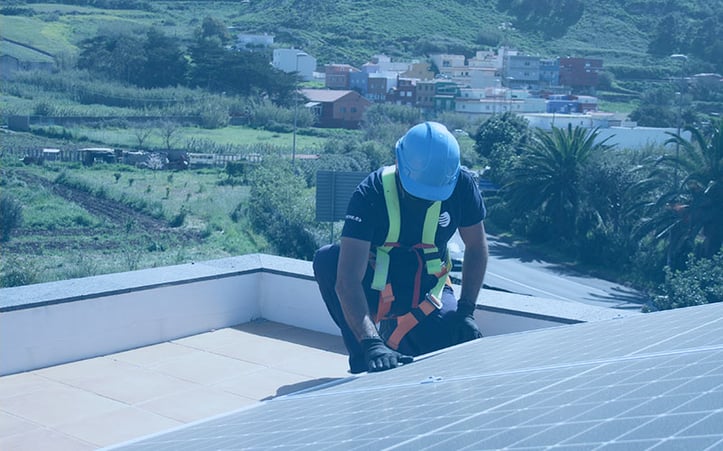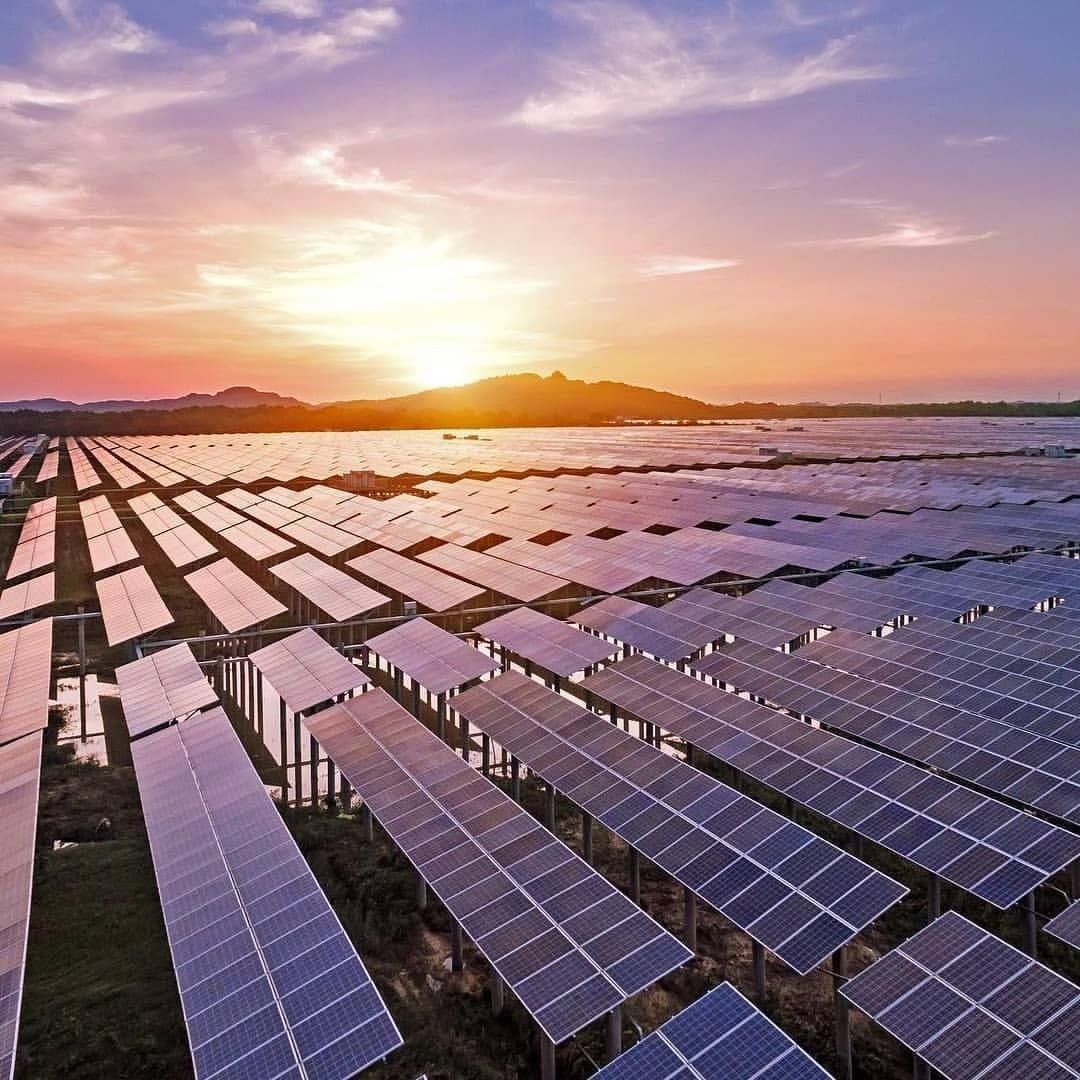
What is the best tilt for solar panels?
If you are considering carrying out a self-consumption installation by incorporating solar panels into your home, it is possible that the term efficiency of solar panels is one of the most important concepts that you should take into account. But do you know exactly what the efficiency of solar panels is and how it is measured?
Today we review some of the main factors that contribute to the efficiency of solar panels, the environmental and technical factors that influence it and different ways to estimate which type of installation is the one that best suits your needs.
In the article How do solar panels work? We already talked about how photovoltaic energy can be produced. Now we focus on the efficiency of solar panels, which can be simply defined as the way of measuring the amount of solar energy that a certain panel can convert into electricity for consumption.
This is done by capturing the electrical current generated when sunlight interacts with the solar cells in the panel through what is known as the photoelectric effect, transformed and transported through the photovoltaic cell busbars into direct current, which in turn, it is converted into alternating current usable by the house thanks to the help of an inverter.
So how many watts does a solar panel generate?
Let’s say, as a practical assumption, that we have a 2mB panel, that is, that it has dimensions of 2m x 1m.
To make the calculation of performance, imagine that if the panel works optimally, with an efficiency of 100%, it could generate 2 mB x 1,000W/m2 = 2,000W of power.
The reality is not always so satisfactory, because real solar panels do not have that performance. But let’s say you have a solar panel of more than 400W with the aforementioned dimensions. In optimal conditions this panel can generate 400W.
(Panel Output Power) / (STC Irradiance) * (Panel Surface in mB) = 400W / (1000W/ mB x 2 mB) = 0.20 -> 20% Efficiency (Performance)
In other words, this solar panel takes advantage of 20% of the solar energy that falls on it. Not counting factors that affect performance such as the inclination of the photovoltaic panels.
What do you need to estimate the panels to install?
The number of solar panels that a house needs depends, in the first instance, on the electricity use that we are trying to replace. And this is achieved by analyzing the times and peaks of our daily consumption.
As an example, and as an approximation to calculate self-consumption in a single-family home, you need an average of 3 solar panels of 320W power for every 2000 kWh of annual consumption.
But, in addition, to determine the number of solar panels you need in your home, you must take into account both the technical and technological aspects of the installation, as well as the characteristics of its location.
If you want to make a first approach, we invite you to visit our self- consumption section where you can make an approximate estimate in simple steps, just by measuring the area of your roof or deck.

What affects the performance of solar panels
As we have already seen, solar cells or photovoltaic cells are responsible for converting sunlight into usable energy. But the efficiency of solar panels is determined by some factors that must be taken into account to ensure optimal performance. Below we briefly explain the most relevant ones.
Installation Materials
The composition of solar panels is complex and consists of several layers, usually glass, plus a protection layer and a front contact layer that covers the individual solar cells connected in series. Beneath them are electrically conductive metal contacts that are laminated to waterproof the cells and insulate them from excess heat. Finally, there is a protective back layer of glass, metal, or plastic. Undoubtedly, the manufacturing materials of the photovoltaic panels will affect the performance and efficiency of the solar panels.
temperature and climate
You have to keep in mind that solar panels do not operate at 100% of their performance all the time. Weather conditions can reduce energy efficiency.
The temperature influences the efficiency of the photovoltaic cell due to the intrinsic characteristic of the semiconductor material. The efficiency of solar panels increases when the temperature drops and decreases at high temperatures, as the voltage between the cells drops.
Therefore, as experts we recommend that you add 25% to the estimate and calculation of the amount of energy you require in your day to day, in order to ensure that the solar panels will generate the clean energy you need.
Solar irradiation and geographical location
The Canary Islands have great potential for the development of energy production with photovoltaic panels at any time of the year. The geographical location of the Archipelago, as well as its favorable climate, allow the use of solar energy to be higher than that of the rest of the Spanish autonomous communities, with little effect on seasonal changes.
Orientation and inclination
According to data from the Environmental Magazine of the sustainability area of the Government of the Canary Islands, the most common cases regarding the orientation of photovoltaic solar panels are the following:
- Fixed orientation throughout the year with a degree of inclination of around 60° above the horizontal. With this type of panel orientation, the average daily radiation is 3.5 KWh/square meter in the province of Las Palmas and 4.3 KWh/square meter in the province of Santa Cruz de Tenerife.
- Fixed orientation with two positions throughout the year: 15° between the months of April and September, both inclusive, and 60° during the rest of the year. With this orientation, the average daily radiation is 4.18 kWh/square meter in Las Palmas and 5.14 kWh/square meter in Santa Cruz de Tenerife.
Shadows cast on the panel
Photovoltaic solar panels are very sensitive to shadows. Fully or partially shaded conditions have a significant rate of impact on the ability to supply power and can lead to losses in power and power output. The solar cells are connected in series to obtain a higher voltage and therefore an adequate production of electricity. Therefore, when shadowing occurs, the installation may have some limitations.
By dimensions, powers and high efficiency
The market offers a wide range of solar panels that offer different performances in terms of efficiency. What must be taken into account is that the lower the performance, the lower the price of the photovoltaic installation, and vice versa.
The usual thing is to handle ourselves in these ranges:
- MEDIUM – LOW. Corresponds to solar panels with yields between 16-17%.
- MEDIUM – HIGH. Assumes yields between 18-19%.
- Solar panels with yields above 19%. There we already talked about the most efficient solar panels.
Technology and efficiency of solar panels.
When starting up a project for photovoltaic solar installations, it is important to have professionals who can offer you personalized advice and have reference providers in the market. At EAVE, at the level of innovation and development, we rely on mono PERC technology that makes it possible to increase the performance of photovoltaic modules and is the system that our trusted manufacturers currently rely on the most.
The acronym PERC stands for Passivated Emitter Rear Cell, which refers to the action of placing a reflective layer (Dielectric Layer) to make the most of the radiation and maximize the efficiency of the panels.
What is PERC photovoltaic cell technology?
It is a sheet on the back of the cell that makes the most of the capture of sunlight and electrons.

While in standard cells a large part of the sunlight is captured by the rear face, wasting radiation and energy, in the PERC cell it is recovered thanks to an extra insulating layer between the silicon and the background aluminum layer. In addition, some holes optimize the capture of electrons that generate greater current and power.
Solar Panel Performance Rating
Despite what it may seem to the contrary, measuring the efficiency and performance of solar panels is quite simple. As a basic measure so you can get an idea, if a solar panel has 20% efficiency, that means that it is capable of converting 20% of the sunlight that it receives into electricity. The highest efficiency solar panels on the market today can reach almost 23% efficiency.
Although as a general rule, the average efficiency of solar panels is between the range of 17% to 19%.
Many consumers and solar industry professionals consider the efficiency of solar panels to be the most important criterion when evaluating the quality of an installation. And as we have seen, there are many factors that influence when it comes to achieving high efficiency in a self-consumption installation with solar panels.
If you need more information, contact us and we will offer you all the advice you require, without obligation.






